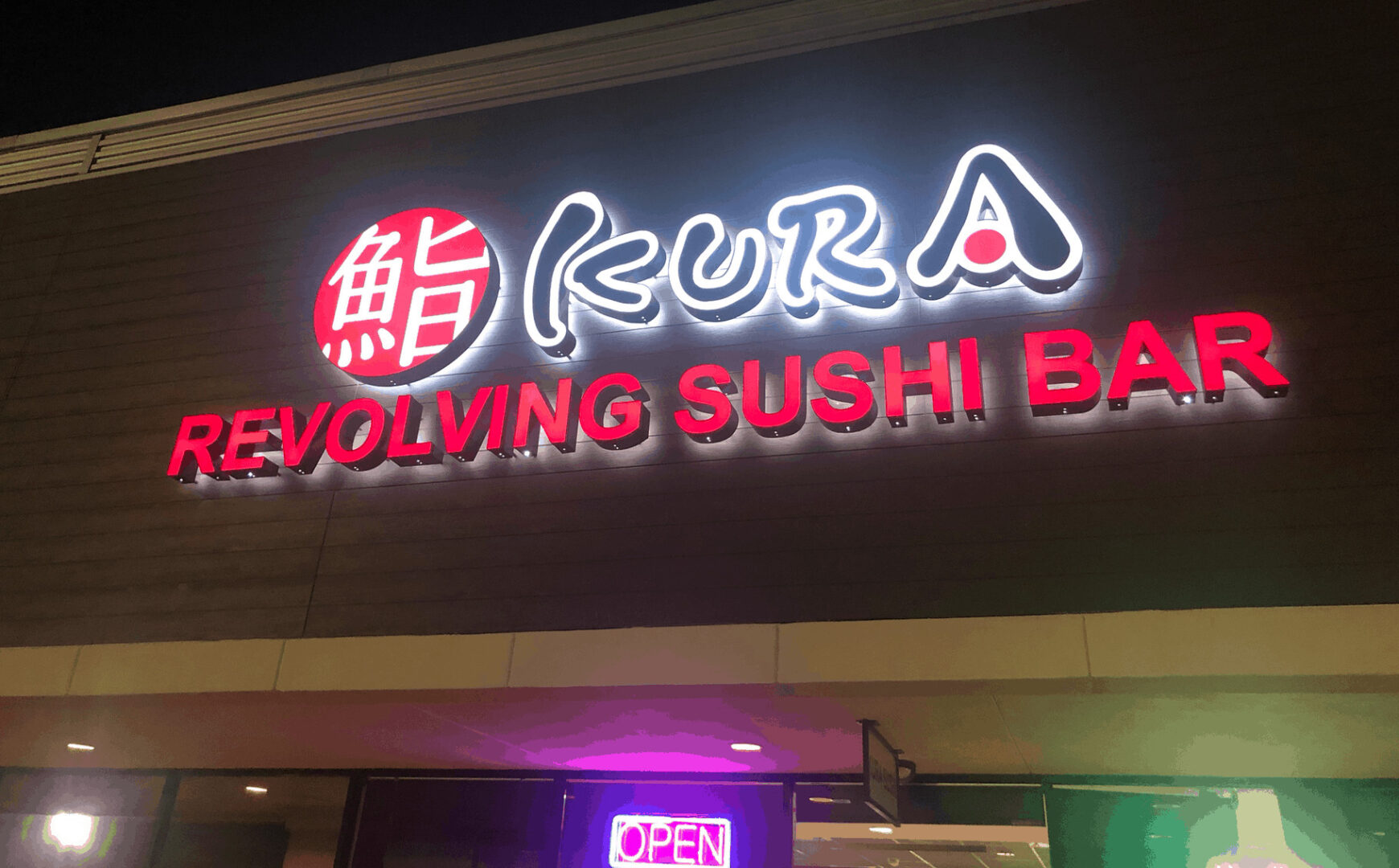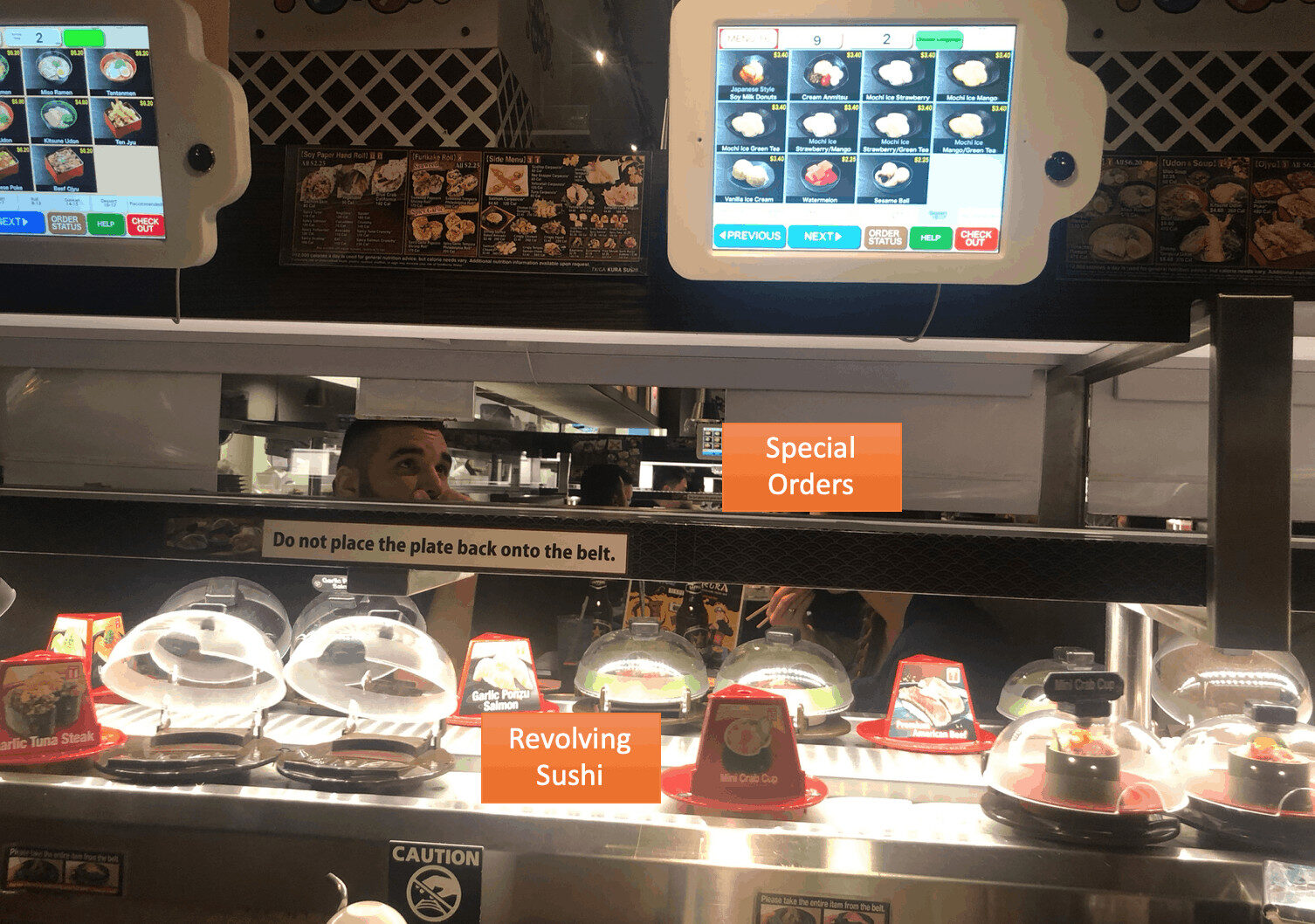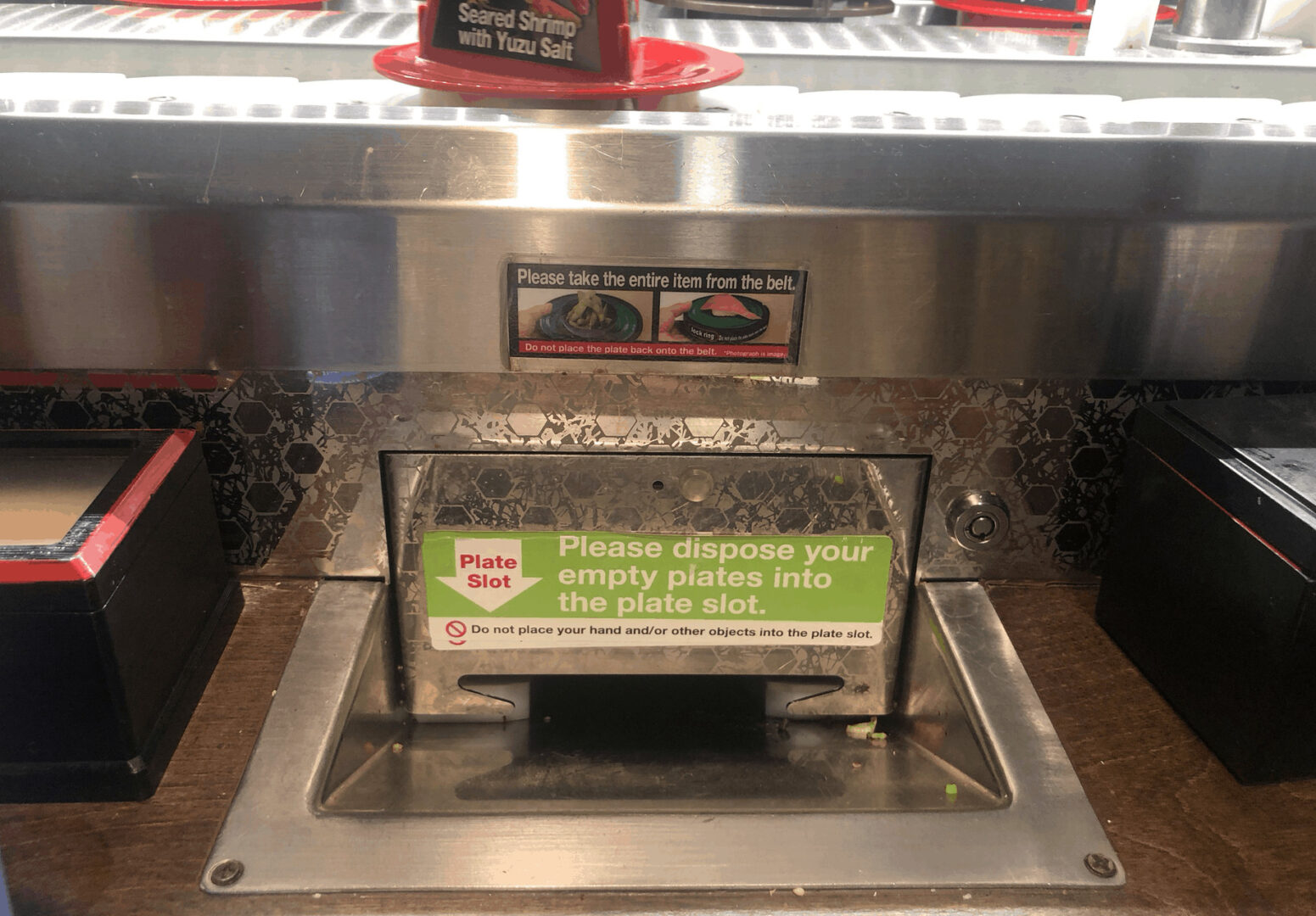Last year, I wrote about my conveyor belt sushi misadventures in Japan:
I've only been to a few of these “revolving sushi” restaurants (as they are sometimes called) in the United States.
Upon the recommendation of my friend Katie Anderson, I decided to check out one of the Dallas-area locations of a Japanese chain, Kura Sushi.

(Check out the “Measures of Success” workshop that she's bringing me to San Francisco for in March… it's open for public registration if you can join us).
In Japan last year, I got confused by the one sushi place's “special order” process, where the special orders were on the normal revolving conveyor. I had previously been to other conveyor belt sushi places where special orders were brought directly to your table.
I wrote that I thought it would be a better process to have a separate flow for special orders. And that's exactly what they do at Kura.
There's the revolving sushi — you're free to grab anything there that you like. But up above is a linear conveyor belt that sends special orders from the kitchen to you without revolving, as I've annotated below:

Not only are the special orders on a special conveyor, it's programmed so that the sushi comes as far as your seat… and then it stops. There's no confusion over what's yours. The tablet makes some noise to alert you, as you see in this video I shot:
Thinking back to what Darril Wilburn, from Honsha, said in Japan:
“It's the leader's responsibility to create a system in which people can succeed.”
Darril Wilburn
Compared to the place in Japan, I think Kura Sushi set us up for success, as customers. I couldn't take the wrong plate by mistake!
Well, except for the moment when the guy to my left was having trouble with his ordering tablet. So, he reached over and ordered a special order ramen noodle bowl using my tablet.
Um, that's not how it works.
The server said (to him), “You should have said something to me.”
The customer to my left “didn't pull the andon cord,” as we say in Lean. He didn't speak up about the problem. This created additional work for the server, as he had to manually make adjustments to his bill and to mine.
Otherwise, the billing is pretty automatic. The special orders are tied to your station and the tablet. Also, when you are done eating anything you took off the conveyor, you put the plate in this special chute:

It's a pretty slick automated process. When you're done and you press “Check Out” on the tablet, they still have to bring you a paper credit card slip to sign. It's too bad it's not like Uber where you just scan a credit card when you sit down and then you just walk away when you're done with the bill being taken care of automatically. Maybe that's a “kaizen” improvement opportunity?
Process aside, the sushi wasn't as good as Japan or finer non-conveyor places in Texas. I'll eventually find a place with great process and great sushi. Well, this place in Japan had both:
Thanks for reading!
Please scroll down (or click) to post a comment. Connect with me on LinkedIn.
Let’s build a culture of continuous improvement and psychological safety—together. If you're a leader aiming for lasting change (not just more projects), I help organizations:
- Engage people at all levels in sustainable improvement
- Shift from fear of mistakes to learning from them
- Apply Lean thinking in practical, people-centered ways
Interested in coaching or a keynote talk? Let’s talk.
Join me for a Lean Healthcare Accelerator Trip to Japan! Learn More










I still haven’t been to a Kura chain in the US, as my hunch was that the food wouldn’t be as good as in Japan – as you discovered. You’ll have to get to Japan to compare the experience yourself, and for me to the one here in CA.
I wrote about my Kura sushi experiences in Japan last year: https://kbjanderson.com/lean-sushi-restaurant-in-japan/
Looking forward to having you out here in San Francisco in March! We’ll have to get some sushi.
Your post actually suggests a common perception about Lean. It would be easy to read this as an example of Lean being more about process efficiency and not about process quality. After all, how good can a process be for a restaurant if the customer’s take away is that the food “wasn’t as good…”
Is “process quality” is the same as “product quality?”
Generally, this was a better customer experience.
But please also note, I’m not labeling the restaurant “Lean” as if it’s a binary Lean or not in an overall sense.
Interesting to see how restaurants are getting involved in Lean processes. You can shave the fat off some of your processes, saving you money, while also keeping the customer happy? Talk about a win for everyone. Sounds like they just need to touch up on their recipe a little more!
Hi Ryan – There’s no evidence that Kura is “getting involved in Lean processes” in Japan or here in the U.S.
That said, I do agree that Lean, in any setting, has to be “win/win” for everybody involved — company, customers, employees, suppliers, etc.
Can you further help me understand the phrase, “didn’t pull the andon cord.” ? Thank you!
It’s a fairly common Lean/TPS term. The “andon cord” is what employees at Toyota pull when they see a problem.
More generally, it’s taken to mean “speak up” or “call out problems” knowing that you’ll get a helpful response from your manager.
Some other blog posts:
https://www.leanblog.org/2012/11/andon-cords-at-the-toyota-takaota-plant-it-doesnt-come-naturally/
https://www.leanblog.org/2014/08/why-toyota-is-eliminating-the-andon-cord-from-its-factories/
https://www.leanblog.org/2018/03/the-academy-awards-add-an-inspector-practice-andon-cord-pulls-avoid-another-mixup/
Comments are closed.